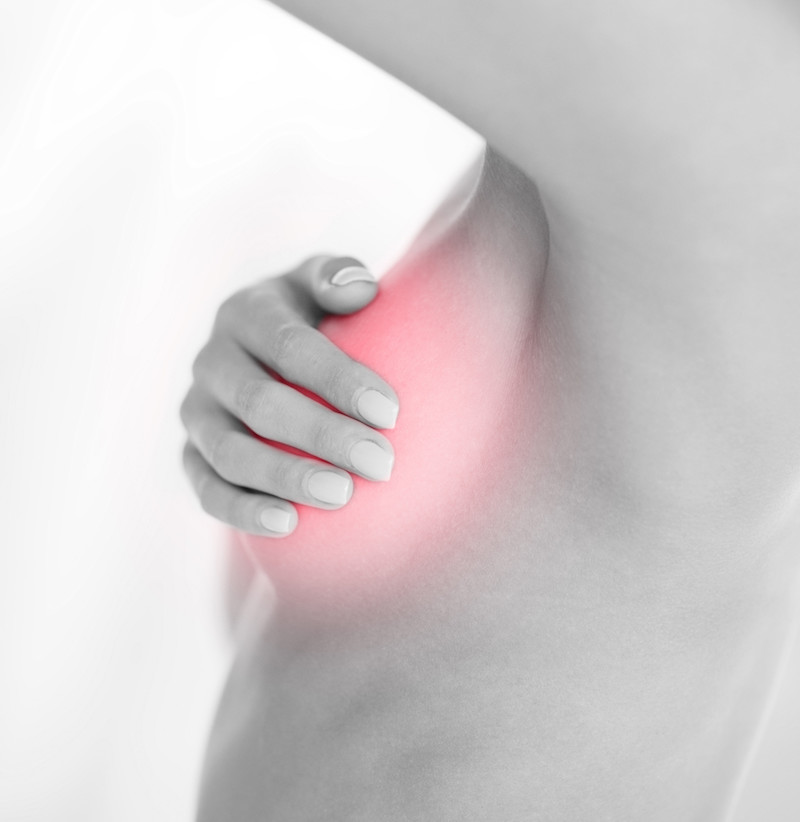
Capsular contracture is one of the most common problems that occur as a result of breast augmentation surgery—cosmetic or reconstructive. In fact, capsular contracture from breast implants occurs in up to 5 percent of women who have breast implants.
Capsular contracture happens when the normal capsule that forms around the implant becomes thick and tight—and, in some cases, can cause pain, a distorted breast shape, and displacement (or shifting from its normal position) of the implant.
Breast Augmentation Before and After
What Is Capsular Contracture?
The body naturally forms a capsule (essentially scar tissue, comprised of collagen fibers) around any foreign object in our bodies—breast implants included. The capsule is usually very thin, with a gossamer type consistency.
“A capsule is the body’s immune response to this foreign substance—and occurs with all breast implants as with other implants, including pacemakers and prostheses.”
When capsular contracture occurs, however, the capsule becomes thicker, more stiff, and less pliable—triggered by bacterial infection, rupture or leaking of the implant, fluid around the implant, or trauma and/or bleeding around the implant.
In the case of capsular contracture, the capsule around the breast implant tightens and constricts, preventing it from moving freely (which can cause discomfort), and in some cases, causing it to harden or be displaced upward to a higher position on the chest. In this situation, the implant is “squeezed” creating a shape that’s artificially round in the top half of the breast.
What Causes Capsular Contracture?
The exact cause of capsular contracture is not completely known. At this time, our best information is that it is related to bacteria and biofilm (a gelatinous layer that surrounds the bacteria, preventing antibiotics from penetrating and killing the bacteria).
It is thought that during the surgery a small number of bacteria may get on the surface of the implant. This happens even though the surgery is done in a sterile environment.
A possible source of these bacteria is the nipple ducts, as we know there are bacteria in the nipple ducts. So even though the skin is cleansed during surgery with a solution that kills bacteria, if the nipple is not covered, bacteria may come out of the nipple and on to the breast skin. If the implant touches these bacteria, then the bacteria will be on the implant.
Now the bacteria are in a more or less dormant state and surrounded by a biofilm. Because the bacteria are dormant, one does not get an infection. Instead, the constant presence of the bacteria “provokes” the immune system to try and “kill” the bacteria. This stimulated immune system may be responsible for creating a thick, tight capsule instead of a soft, pliable one.
“Because of this theory, I take all possible steps to avoid exposure of the implant to the bacteria.”
The Four Stages—or Grades—of Capsular Contracture
No patient should self-assess capsular contracture; this is something that needs to be done by a trained, board-certified plastic surgeon.
I assess patients for capsular contracture based on the following stages.
Grade I: the breast is soft and appears natural in size and shape
Grade II: the breast is not as soft, but appears normal
Grade III: the breast is firm, the implant can be easily felt, and the breast looks abnormal
Grade IV: the breast is hard, painful to the touch, and the shape of the breast is distorted
How to Prevent Capsular Contracture
As a plastic surgeon specializing in breast augmentation I use all the known available methods to reduce the risk of capsular contracture:
> I use textured implants to help reduce the chance of capsular contracture. Studies have shown that texture helps reduce the risk of capsular contracture. All three U.S. implant companies— Mentor, and Allergan—offer textured implants in both round and shaped styles. In the U.S., the majority of plastic surgeons still use smooth implants, more and more are using textured. In Europe, however, textured implants are used most often.
> I use under-the-muscle implant placement, when appropriate, which seems to helps prevent some cases of capsular contracture – though this placement is not right for every patient.
> I use a triple antibiotic, as opposed to a single antibiotic, solution during the surgery.
> I use the “no-touch” technique to place the implant. Minimal contact with the implant is important. I use something called the Keller funnel to further reduce contact with the implant.
> I use a nipple shield to prevent bacteria from the nipple ducts from getting on the surface of the implant.
> I use an inframammary fold incision (an incision made in the fold where the lower part of the breast meets the chest wall) to avoid the nipple areola complex. Periareolar incisions (made at the outer edges of the areola, the ring of color around the nipple) have a higher rate of capsular contracture, perhaps because the nipple ducts—with their potential bacteria—cannot be excluded from the operation area.
> I use a sizer—not the implant itself—if I need to determine the right size implant for the patient. The sizer is the exact size of the permanent implant and allows me to check for correction of asymmetry, etc. Then the sterile permanent implant is opened and placed. This way the permanent implant is manipulated very minimally, reducing its exposure to the patient’s skin and air—and potential bacteria.
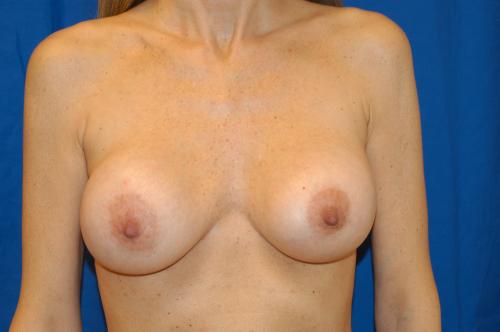
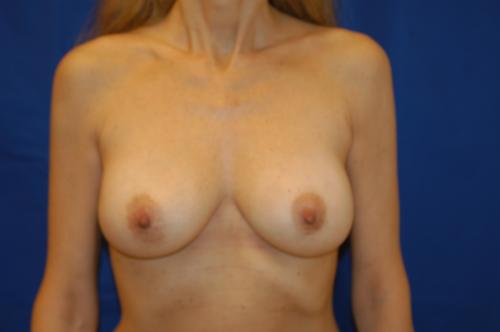
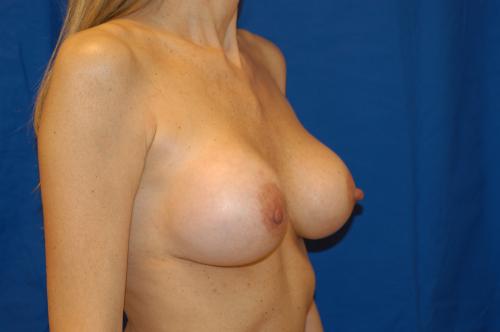
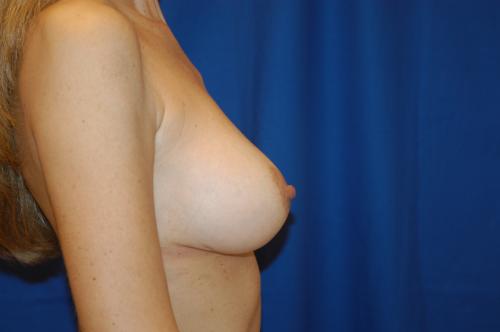
Treatment of Capsular Contracture
Prevention of capsular contracture is my first priority.
Since there are degrees of capsular contracture, not all contracture needs to be treated. Generally, if the breast feels slightly firm but looks pretty, patients typically prefer no treatment. In these situations, ultrasound treatment may help soften the breast.
If the patient experiences a distortion of breast shape or implant position, then the aesthetic result is typically not one the patient wants and surgical intervention may be desired. It’s important to note, however, that surgery is not required; this is purely a cosmetic and comfort issue.
If the capsular contracture is related to a tear/leak of the implant, then the patient may desire correction to solve both issues: remove the leaking implant and correct the capsular contracture.
During surgery (called capsulectomy), I remove the hardened capsule from around the breast and place a new, fresh implant. The entire capsule should be removed, if possible. Operations that do not remove the entire capsule are not as successful.
Re-using the same implant should be avoided: if the contracture is caused by surface contamination of the implant with bacteria, re-using the same implant does not make sense. A temporary drain (to prevent a potential buildup of fluid and/or blood) is placed for best results. These drains are simple plastic tubes with one end in the incision and the other end leading to a plastic bulb-like collector outside of the breast.
“While capsulectomy does not guarantee a recurrence, in most cases it works.”
Bottom line: Capsular contracture is a risk of breast implant surgery but in most patients it can be prevented and, if it occurs, successfully treated.

